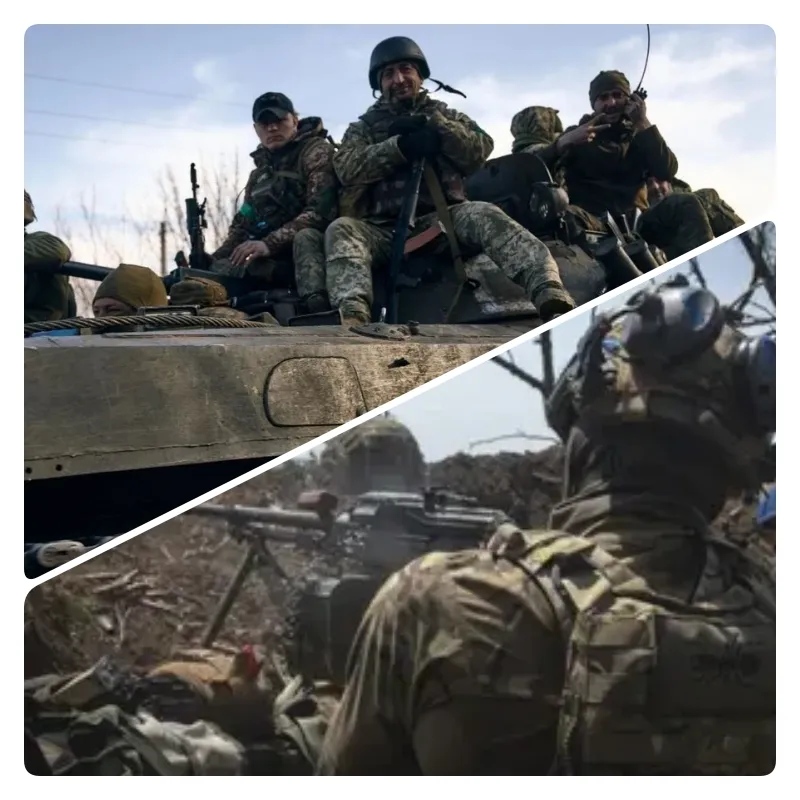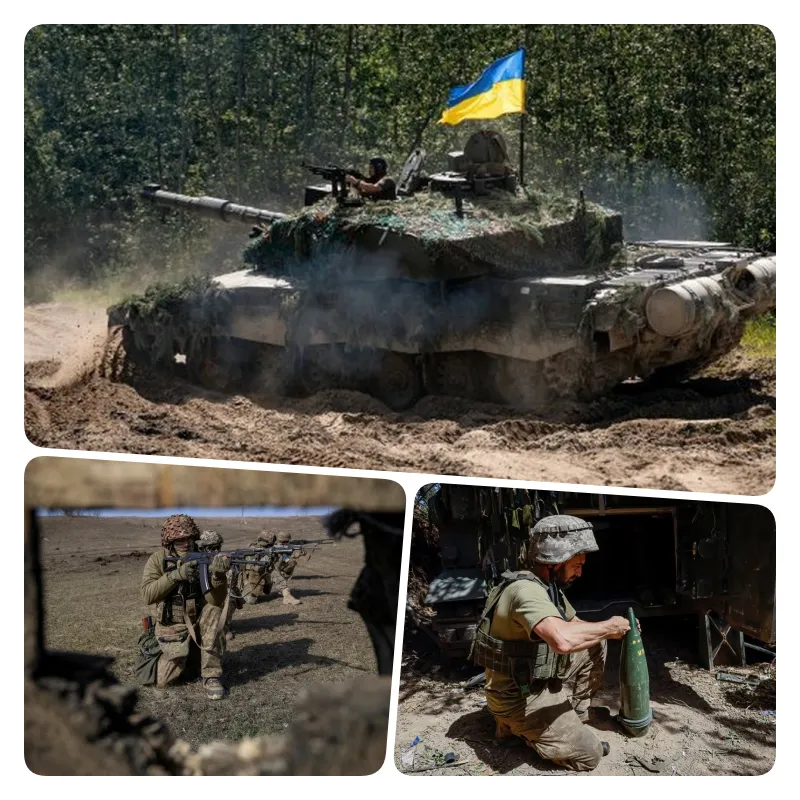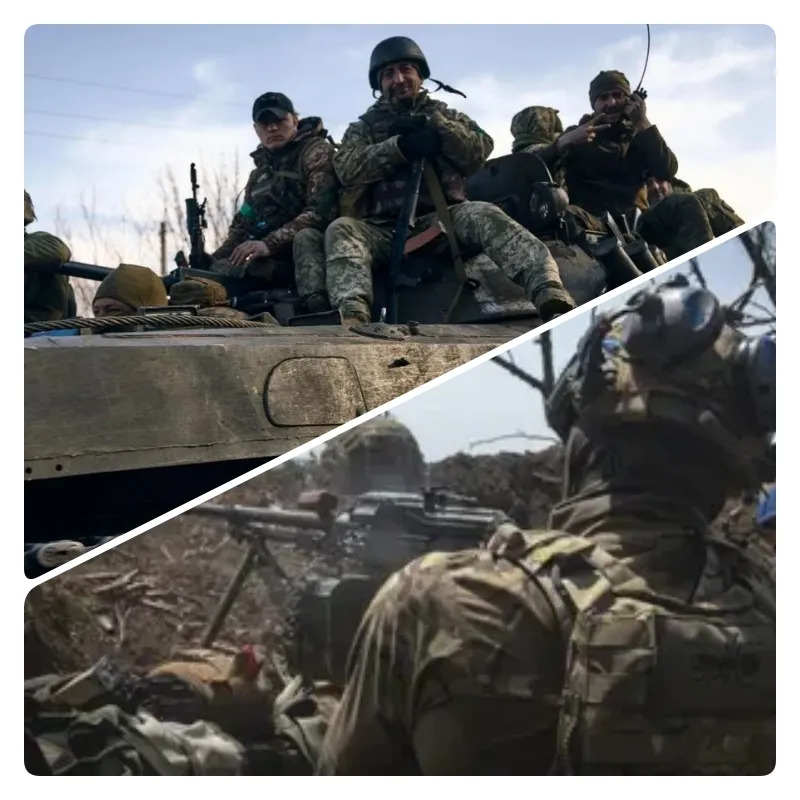
Kursk Offensive Intensifies Pressure on Ukrainian Troops in Donetsk
Ukraine’s decision to redirect forces from Donetsk to launch an offensive in the Kursk region has left its eastern frontlines vulnerable to intensified Russian attacks.
On August 6, as Ukraine initiated its offensive in Kursk province, Russian forces in Donetsk, hundreds of kilometers away, did not ease their pressure. Despite the ongoing operation in Kursk, Russia has maintained relentless assaults in Donetsk, leaving Ukrainian troops there struggling to hold the line.

In one encounter, a five-man Russian assault team sped towards Ukrainian defenses on motorcycles. This “assault team” tactic has become a common Russian strategy in Donetsk, leveraging their numerical superiority to break through Ukrainian lines.
To conduct the Kursk operation, Ukraine had to divert significant numbers of troops and equipment from the Donbass frontlines, increasing the burden on the remaining forces.
“We don’t have enough manpower to get the job done,” lamented the commander of the 21st Battalion of the Independent Presidential Guard Brigade, currently engaged near Krasnogorovka in Donetsk.
This summer, Russian forces have rapidly gained control in the Donbass region, advancing towards the key logistical city of Pokrovsk. On August 17, the Russian Ministry of Defense announced that its forces had seized the village of Sergeevka, located 15 km east of Pokrovsk.
Pokrovsk holds strategic importance as it sits at the intersection of supply routes critical for Ukrainian forces in the Donbass. Losing Pokrovsk would sever a vital lifeline for Ukrainian units, including the stronghold of Chasov Yar to the north. On August 16, officials in Pokrovsk urged residents to evacuate.
On August 13, U.S. officials reported that Russia had begun redeploying units from the frontlines to reinforce its forces in the Kursk region, although details on numbers and prior locations were not disclosed.
Ukrainian President Volodymyr Zelensky stated on August 17 that the situation on the eastern front near the cities of Pokrovsk and Toretsk was “under control,” following recent Russian advances towards these cities.
“Russia has launched dozens of attacks on our positions in the past day, but Ukrainian soldiers and units are doing everything possible to repel the enemy,” he declared.
On the ground, Ukrainian commanders in the Donbass region report that the situation has become increasingly dire throughout the summer, with no signs of Russia easing its pressure despite the Kursk offensive.
Although the U.S. approved a multi-billion-dollar aid package in April, Ukrainian units in the Donbass still suffer from an artillery shell shortage. In some areas, Russian artillery outguns Ukrainian forces ten to one. Additionally, Russian forces have been neutralizing Ukrainian drones with electronic warfare equipment.
Ukrainian officers emphasize that manpower shortages are the most significant challenge. A Ukrainian major stationed in Chasov Yar for the past two months remarked, “We only have 2-3 soldiers manning a position that ideally requires 5-6.”
Due to the severe troop shortage, units in the area have had to deploy cooks, mechanics, and other logistics personnel to the trenches. “It’s only a matter of time before the enemy finds our weak points,” the major warned.
Kucher, commander of Ukraine’s 21st Battalion, noted that at the start of the year, his units near Krasnogorovka had numbers comparable to the Russian forces. However, Russian troops in the area now outnumber Ukrainians two to one.
New recruits sent to Krasnogorovka have only been able to replace about 20% of the battalion’s wounded. These reinforcements are often older than the volunteers who joined when the conflict first erupted, Kucher explained.
The average age of infantry soldiers in the 21st Battalion has risen to over 40, a trend seen across many other units. Many Ukrainian soldiers are exhausted after prolonged stints in the trenches without relief, Kucher added.
Small-scale Russian motorcycle raids have become increasingly common across the Donbass frontlines this summer. Western experts note that while these raids incur heavy losses, they help Russia pinpoint Ukrainian positions.
In a motorcycle raid near Krasnogorovka on August 6, two Russian soldiers were shot by Ukrainian forces, one retreated, and two others hid in the forest, awaiting reinforcements.
Ukrainian troops later discovered one Russian soldier hiding near the frontlines and eliminated him, but they couldn’t locate the last soldier. This poses a problem, as even one surviving Russian soldier can report Ukrainian positions, leading to artillery strikes.
“We overheard the enemy on the radio saying, ‘They’re firing from here,'” Fantom, a mortar team commander in Ukraine’s 21st Battalion, recounted. “Their goal is to locate our positions and then attack with artillery, mortars, or drones.”
Ukrainian soldiers eventually found the last Russian soldier hiding under a car wreck but chose not to fire. “If we had more ammunition, we would have shot at that car,” said a Ukrainian soldier. “But we don’t have enough ammo to waste on just one Russian soldier.”
Numerous Ukrainian brigades in the Donbass have also complained about the ammunition shortage. “We are ordered to fire only at fixed targets to conserve shells,” said Sifonesco, a Ukrainian artillery reconnaissance unit commander near Pokrovsk. “We have to wait until the enemy tank stops before we can open fire.”

Like other Ukrainian brigades, Sifonesco’s unit has resorted to using suicide drones to compensate for the artillery shell shortage. However, these drones have become less effective as Russia intensifies its use of jamming equipment. Currently, only about half of the drones hit their targets.
“The Russians have more of everything than we do,” Sifonesco noted. “They have more manpower, more guns, and more ammunition. Eventually, these factors will force us to retreat.”
Rob Lee, an expert at the U.S.-based Foreign Policy Research Institute (FPRI), attributes Ukraine’s manpower shortage to the casualties suffered during last year’s failed large-scale counteroffensive. He suggests that the situation might improve next year when new recruits complete their training and join the frontlines.
“Fundamentally, Ukraine lacks sufficient reserves,” Rob Lee said. “They don’t have enough units to reinforce every area.”
The Kursk operation has forced Ukraine to cut its forces in Donetsk, but Ukrainian soldiers in the east remain skeptical about the effectiveness of an offensive on Russian territory. “We really need a thousand soldiers here,” Kucher stated.



